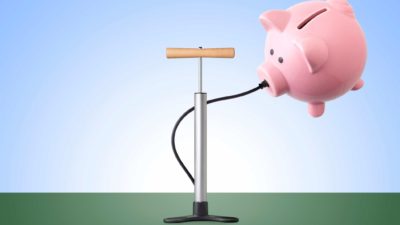There are many things investors can do to manage risk in their portfolio and a number of these strategies, such as diversification, have been well covered.
But there's another trick that investors might find useful as many professional traders use this to ensure the market doesn't wipe them out.
While it's not particularly fashionable to talk about risk mitigation on a day like this with the S&P/ASX 200 (Index:^AXJO) (ASX: XJO) index jumping 0.5% with large-cap miners like BHP Billiton Limited (ASX: BHP) and financials like Macquarie Group Ltd (ASX: MQG) leading the charge, I suspect we will soon enough be turning our attention to managing the downside risks in this volatile market.
One way professionals control risk is to use the 2-6 rule. The key objective is to ensure than no one position in your portfolio can put more than 2% of your capital at risk; while collectively, the total loss on your portfolio cannot exceed 6%.
When the value of a single position drops by 2% or more, the trader will close the position. The whole portfolio is liquidated if it drops by 6% or more.
In a falling market, capital is preserved as the trader is effectively "stopped-out"; while in a rising market, profits are locked in as the 2% and 6% limits are reset to the value of the investment at the end of every trading day.
As you can probably tell, this strategy is designed for traders as it prevents them from losing their livelihood. The needs of retail investors are different as their regular job puts food on the table and a roof over their heads.
But it's still useful for retail investors to have rules that are loosely based on the 2-6 rule. Of course, you don't have to use 2% and 6%. These numbers could also work at 8% and 25%. It really depends on your risk appetite and the type of stocks you have in your portfolio.
If you are overweight on illiquid small caps with blue sky potential, you will want a looser limit as the "random walk" of these stocks will be longer. The opposite is true if you hold majority blue-chip stocks.
Using a rule like this has another benefit. It makes you look at the value of your portfolio regularly (ideally at the end of every day).
After a while, you will get a feel for what the average gains are for your portfolio. For those who studied statistics, this is where we can apply the "empirical rule" to tell us if we are making abnormal profits.
From my experience, whenever the gains on my portfolio make an oversized gain (we are talking about 2-3 standard deviations here), it's a sign for me to look at selling and stop buying. This doesn't mean I will sell out of everything, but I will force myself to at least take some profit off the table so that I will have capital to reinvest when stocks pull back.
When the reverse happens, and your portfolio takes a big hit (to below the limit you have set), you should also force yourself to go through your portfolio and examine each stock you own and whether you should still be holding it.
If you are completely honest with yourself, you will end up closing (or at the very least downsizing) a number of losing positions.
This isn't just a strategy for short-term investors or traders. In my opinion, everyone with a long investment horizon should be re-assessing their portfolios at least every quarter, if not more regularly.
Having a 2-6 rule of sorts will help you remember to undertake this exercise – and that can only be a good thing.







